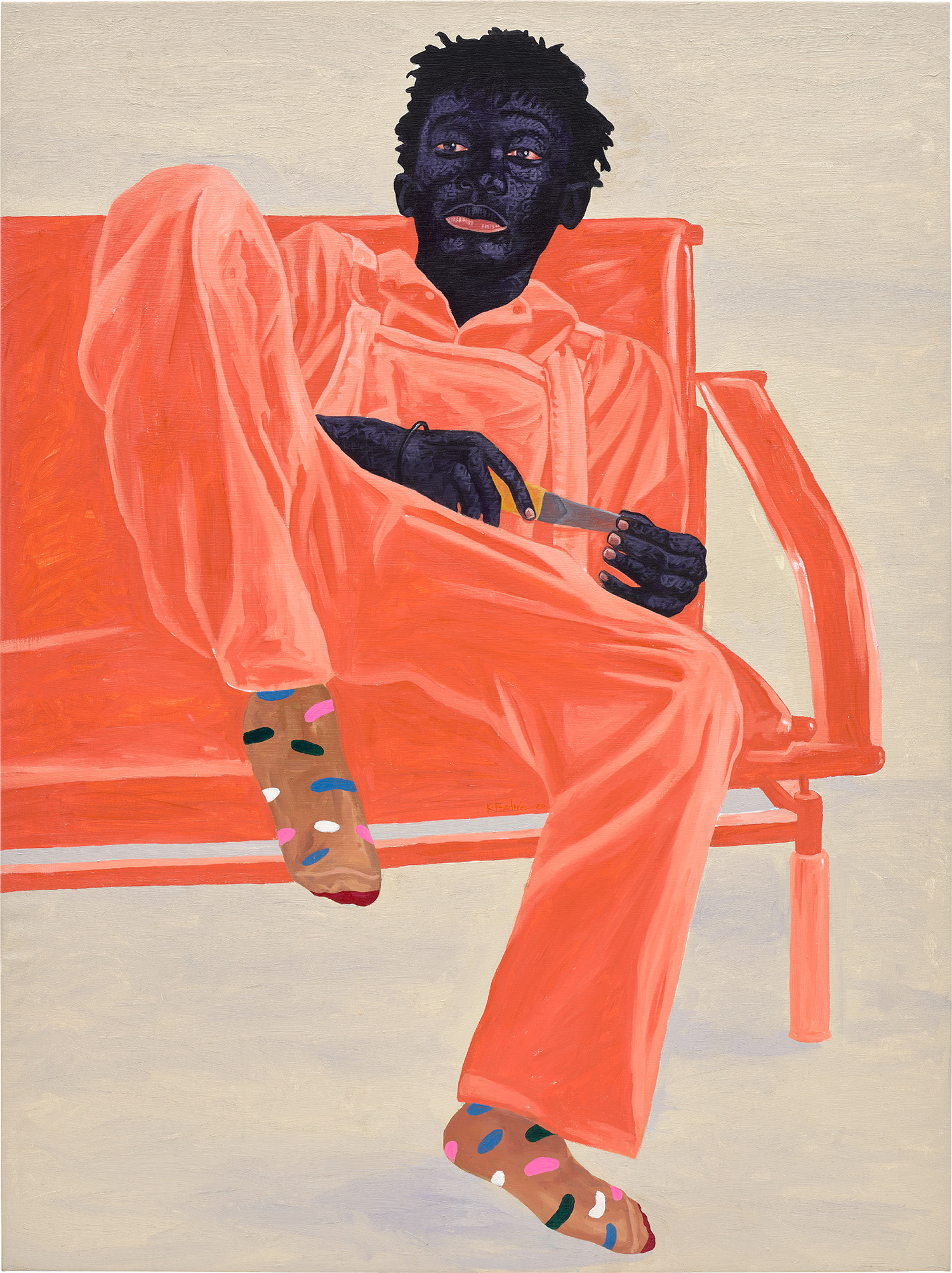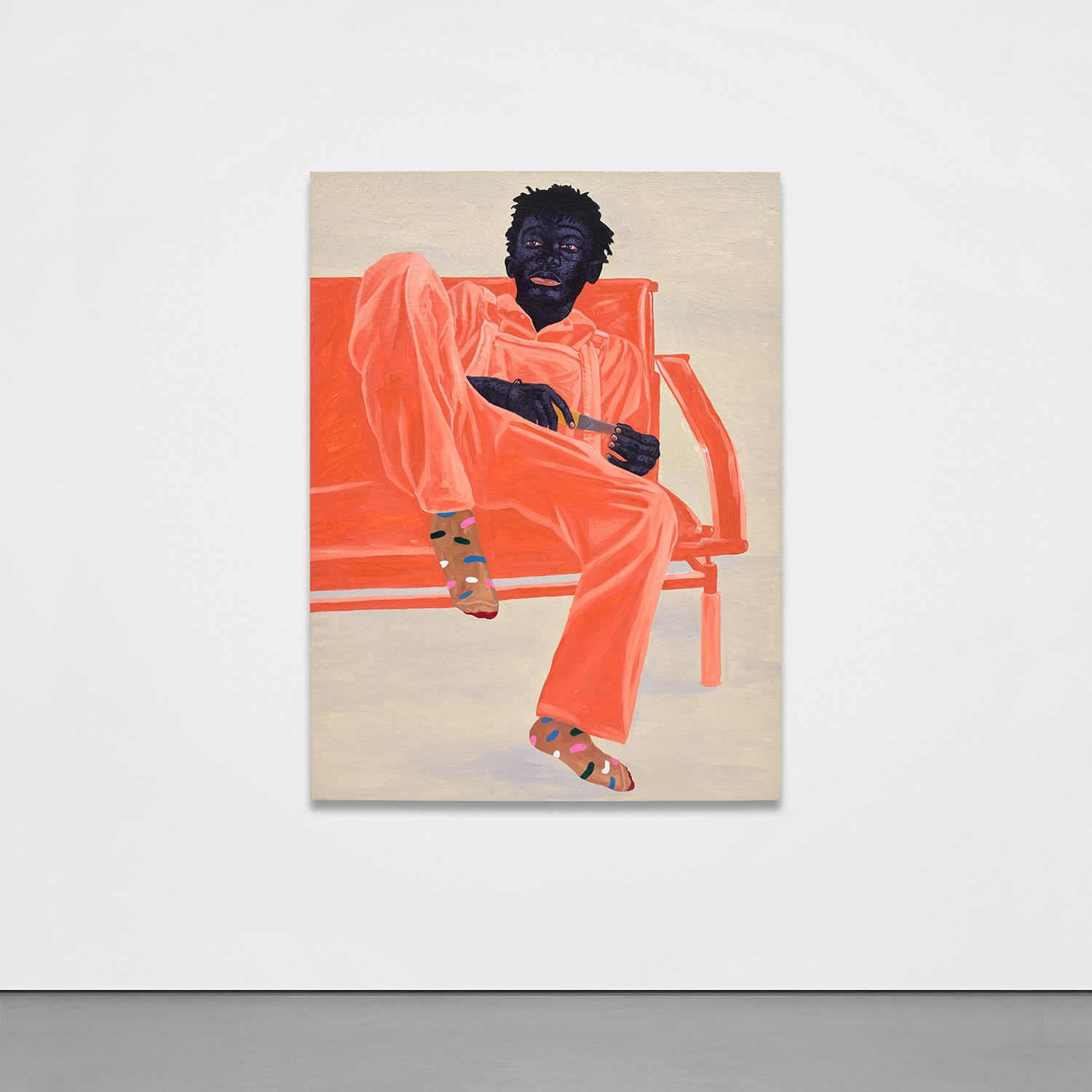



Property from an Important Private Collector
4
Kwesi Botchway
The Apprentice Bench
signed and dated 'K. Botchway 20' on the centre of the bench; signed, titled and dated 'Kwesi Botchway The Apprentice Bench (2020)' on the reverse
acrylic and oil on canvas
171 x 127.4 cm (67 3/8 x 50 1/8 in.)
Painted in 2020.